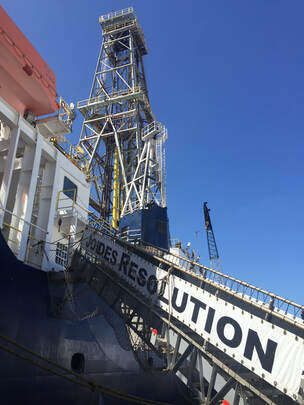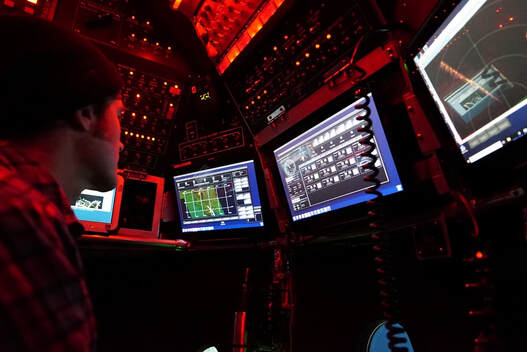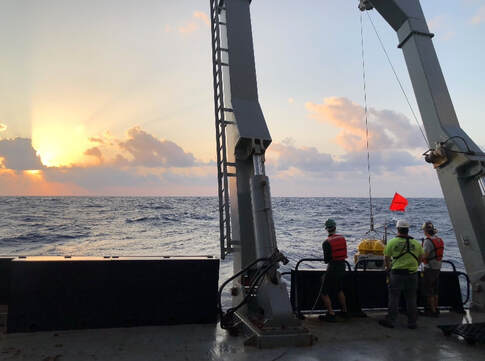Current Research
 RV JOIDES Resolution in San Diego for port call, fall 2019
RV JOIDES Resolution in San Diego for port call, fall 2019
Connections between Mantle convection and oceanic gateways in the North Atlantic Ocean
International Ocean Discovery Program Expedition 395
We are testing hypotheses about the origins of the V-shaped ridges, and how the Iceland plume has influenced oceanic circulation, by drilling V-shaped ridges and troughs off-axis and the fine-grained sediments that lie above. Expedition 395 was completed in summer 2023, check out the Expedition webpages for more details.
Post-expedition research will focus on establishing whether the history of deep-water circulation across the major oceanic gateways is linked to mantle plume activity, using a combination of reflection seismic profiles, wireline logging and core data. This work is supported by an award from the National Science Foundation.
|
Submarine Volcanism
at 9°N, East Pacific Rise We are studying the processes of volcanism, heat flow and hydrothermal circulation at the fast-spreading East Pacific Rise. Using data collected by Autonomous Underwater Vehicle Sentry and the submersibles Jason and Alvin, we are quantifying the driving forces behind repeated eruptions at 9°50'N, where we have collected data in 2018, 2019, 2021 and 2023. We will be monitoring the build up to a future eruption during National Science Foundation sponsored expeditions to the 9°50'N area, the next of which is planned for spring 2024. |
|
Detachment Faulting and Seismicity on Mid-Ocean Ridges
A large proportion of the oceanic lithosphere is probably formed by slip on long-lived, low angle faults called detachments. These detachments roll over to form corrugated domes, called oceanic core complexes, where deep-seated rocks are exposed on the seafloor. Although we can map detachment faults on the seabed, their subsurface geometry remains unclear. For example, we don't fully understand how detachment faults roll over to low angles, how they initiate, or how they cease to slip. Starting December 2022, we monitored microearthquakes on the Mount Dent detachment fault system, on the Mid-Cayman Rise with a network of 40 ocean bottom seismographs. |


